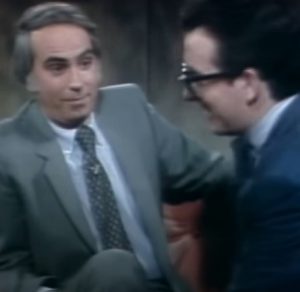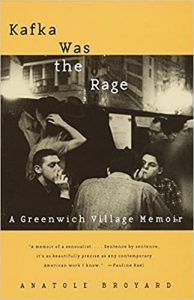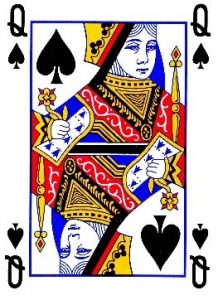By Tony Attwood
This is part of the “All Directions at Once” series which looks at the ebb and flow of Dylan’s writing across the years, rather focusing entirely on individual songs.
There is an index to the whole series of articles here. The previous article in the series was Bob starts the 70s… slowly
My thesis in this series is that we can get a better understanding of Bob Dylan’s compositions by looking at them in the order they were written, and seeing them as an ebb and flow of creativity. In this way I feel we can understand much more about Dylan through this process, than through criticisms of individual songs heard in isolation from each other.
In the last episode of All Directions I tried to summarise up to 1970, with the “New Morning” songs, seeing how the subject matter of his work had changed across time.
As others have often said, in these songs we can get a clear impression that two things dominated Dylan’s creativity in 1970 – his desire to get away, and his need to create an album to fulfil contractual obligations. Listening to the compositions as a collection I don’t get the feeling that this was music Dylan was satisfied with or that he really wanted to create. The fact that it is nevertheless enjoyable and indeed that beautiful new arrangements can emerge from it, shows us what a master craftsman he has always been. Stunning songs, even when he was just fulfilling the contract.
1971 saw five songs. Two of these most of us will remember as great works (“When I paint my Masterpiece” and “Watching the river flow”) and a more contentious protest type song (“George Jackson”) which again raised the issue of Dylan’s approach to writing about real people, which I’ve covered in a little detail already (32: Does Dylan really care about these people he writes about?))
In 1972 we had one song still fondly remembered as a masterpiece (“Forever Young”) and the incidental music and main them to “Billy the Kid”, which for some composers would be a fine year’s work, but for Dylan seems excellent in itself, but many of us wanted far more!
But then in 1973, he was suddenly up and running again. Everyone will remember “Knocking on heaven’s door”, and many dismiss “Never say goodbye,” while a small minority revere the level of experimentation, not least because Bob had by now written hundreds of songs and yet was still interested in seeing just how far the form could be pushed.
If that song never quite works, “Going Going Gone” shows Dylan experimenting further and learning all the way, such that by the time he wrote “You Angel You” and “On a night like this”…Bob was clearly back on track, able to produce enjoyable and entertaining pieces, as he gathered his creative strength ready to produce two extraordinary works. That neither of these are well remembered except among absolute aficionados of the man’s compositions, shows us just how far Bob was willing to go to find something new.
My point thus is that the wonderful songs that emerged through the utter explosion of reignited genius that was 1974, had to come from somewhere. If we argue that they simply popped into his head then we have no explanation as to why he couldn’t write a new “Blood on the Tracks” every year. But if we listen closely to the two songs that ended 1973 we do see that Bob was pushing the limits of the form, just to see where he could get to.
These final two songs of 1973 were Dirge and Wedding Song.
Thus I argue that to dismiss “Dirge” and “Wedding Song” as being of little importance, suggests there was no artistic build up to collection of extraordinary works that followed in 1974. But if we do see Dylan’s creativity as a wave, then in 1973 the tide was certainly coming in, as those final songs took us to a new high point from which Dylan was completely ready and free to launch himself forward with not only works of genius, but works of genius the fans and the self-appointed critics would like. Quite a combination!
Thus if you are not fully familiar with the final two compositions that preceded “Blood on the Tracks” I would strongly recommend listening to these recordings and then consider what came next.
Dylan opened 1974 with a return to the old story telling songs on which he had honed his composition skills in the 1960s. Tales of gamblers and travellers, tales of down and outs, the guys who are outside the law but are good at heart. We think back perhaps to Rambling Gambling Willie and Only a Hobo. Since then Dylan had experimented with taking this genre further in 1967 with Drifter’s Escape and I am a lonesome hobo but that year he was minimising the songs, reducing them to a matter of a few enigmatic verses rather than giving us the full on tale.
Now he was back to theme and he gave it everything he had with Lily, Rosemary and the Jack of Hearts.
Where did that work come from? My view as I suggest above is that it came out of the previous year’s work for if ever two songs were a preparation for the next two this is it. “Dirge” is serious, while “Tangled” is playful, but the same notion of the complex weave of life is present in “Wedding Song”, “Dirge”, “Jack of Hearts” and “Tangled”; they are all about the complexity of life and the complexity of people. Even when we think we know what it is all about, life can still play tricks on us. Thus each song is about the same entanglement and chaos that life gives us, it is just that each song starts from a different point of view (as it were).
When I first came across “Tangled up in blue” it took me a while to realise that I was not just listening to a song equal in merit to the ultimate classics of the 60s. A song I would put alongside “Desolation Row”, “Rolling Stone”, “Johanna”, “One of us must know”, “Fourth Street” “When the Ship Comes In”…. But also a song which once again, just like those just mentioned, seemingly came out of nowhere, to take us into totally new ground.
For “Tangled” has that quality of “Visions” in which you can’t quite get a grip on who is where and what is what or indeed, when is when. It really is an absolute ground-breaking event in the history of 20th century music, continuing the theme of “Visions,” “Drifter’s Escape” et al that life doesn’t actually make sense at all.
And quite amazingly, through this season of writing songs Dylan rarely let the level slip. No matter which way he turned, he seemed to be able to deliver, even the simple format of Shelter from the storm still finds room for Dylan to go where no one has looked before.
And he most certainly wasn’t done yet, because we still had the almighty Idiot Wind waiting to burst forth. I’ve made this sort of comment before but I can’t resist running it again: for anyone else a song like “Tangled” would be the ultimate highlight of a writing career. For Dylan it was a return to his highest level of form, but then, just to make sure we got the point, he did it again with another piece that for anyone else would be the all time greatest achievement of a lifetime of writing: Idiot Wind.
I’m trying hard not to make this just a list of the songs – this section of “All Directions” is meant to be an overview – but let me just throw in Up to Me.
So go on, boys, and play your hands, life is a pantomime The ringleaders from the county seat say you don’t have all that much time And the girl with me behind the shades, she ain’t my property One of us has got to hit the road, I guess it must be up to me
If you want to know where Bob was this year, if you want to know what was going on inside his head as he wrote these incredible pieces of music, he had just found a way, in one verse to sum up the whole of the “songs of farewell” concept.
In fact Dylan created his latest masterpiece album by moving into a new topic of writing – writing about fate.
I have the clear impression that two things dominated 1970 – his desire to get away, and his need to create an album to fulfil contractual obligations, without actually feeling that this was music he was satisfied with or really wanted to create.
And so, to deal with this, in the next three years Dylan distanced himself from songwriting. It wasn’t that he stopped writing totally but that he wrote far less frequently, with moments of inspiration and occasional genius interspersed with more ordinary everyday works, and the occasional song that might be best noted as a “throwaway”.
Which just leaves the issue of the subject matter that Dylan used from 1970 to 1974 to create this new direction. As in earlier editions of All Directions I’ve assigned simple descriptors to each song, and totalled them up. And as before I would stress, it doesn’t matter too much if we disagree with individual categories – it is the flow of topics and noting which topics particularly occupied Bob’s mind, that gives us further insight. Below is the number of songs I have noted in each of the topics that I feel the songs covered.
1970
- The environment, places, locations: 5
- Jewish prayer: 1
- Visit: 1
- Love: 4
- Lost love: 1
- Blues: 1
- Be yourself: 1
1971-3
- Postmodernist blues: 1
- The environment: 2
- Protest: 1
- Asking for a dance: 1
- Love: 2
- Being trapped 1
1974
- Love: 5
- Lost love: 2
- The environment: 1
- Death: 1
- Moving on: 3
- Rejection of labelling: 1
- Disdain: 1
And finally an attempt to add these to those topics noted in previous articles
| Subject | 1960s | 1970 | 1971/3 | 1974 | Total |
| Art | 2 | 2 | |||
| Be yourself | 1 | 1 | |||
| Being trapped | 1 | 1 | |||
| Blues | 10 | 1 | 11 | ||
| Change | 4 | 4 | |||
| The city | 1 | 1 | |||
| Civil/social rights | 6 | 6 | |||
| Dada | 12 | 12 | |||
| Dance | 1 | 1 | |||
| Death | 4 | 1 | 5 | ||
| Disaster | 1 | 1 | |||
| Disdain | 6 | 1 | 7 | ||
| Do the right thing | 2 | 2 | |||
| Escape | 1 | 1 | |||
| Environment | 5 | 2 | 1 | 8 | |
| Future/eternity | 2 | 2 | |||
| Gambling | 1 | 1 | |||
| History | 1 | 1 | |||
| Homage | 1 | 1 | |||
| How we see the world | 1 | 1 | |||
| Humour | 22 | 22 | |||
| Individualism | 7 | 7 | |||
| Jewish prayer | 1 | 1 | |||
| Justice | 2 | 2 | |||
| Kafka | 5 | 5 | |||
| Labelling | 1 | 1 | |||
| Leaving | 1 | 1 | |||
| Life is a mess | 1 | 1 | |||
| Lost love | 34 | 1 | 2 | 37 | |
| Love desire lust | 26 | 4 | 2 | 5 | 37 |
| Modern life | 4 | 4 | |||
| Moving on | 43 | 3 | 46 | ||
| Nothing changes | 4 | 4 | |||
| On the run | 1 | 1 | |||
| Party freaks | 3 | 3 | |||
| Patriotism | 3 | 3 | |||
| Postmodernism | 1 | 1 | |||
| Protest, rebellion | 19 | 1 | 20 | ||
| Randomness, surrealism | 8 | 8 | |||
| Relationships | 1 | 1 | |||
| Religion | 2 | 2 | |||
| Self interest | 1 | 1 | |||
| Sex | 1 | 1 | |||
| Visiting | 1 | 1 | |||
| Women | 6 | 6 | |||
| World Weary | 1 | 1 |
And finally highlighting the most commonly used topics (ie those with over ten songs composed on that theme)
- Dada: 12
- Humour: 22
- Life is a mess / tragedy of modern life: 15
- Lost love: 34
- Love, desire, lust: 26
- Moving on: 43
- Protest, rebellion: 17
- The Blues, being world weary: 10
These are the eight topics that have dominated Bob’s writing from his emergence as a composer to the conclusion of the Blood on the Tracks sessions. Those eight topics are, as far as I can see, what he wrote about most in his first 15 years of composing.




